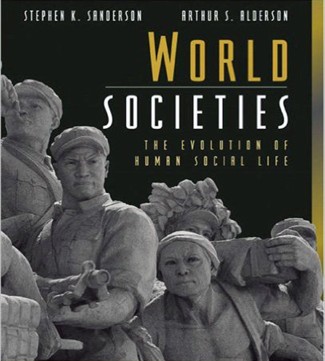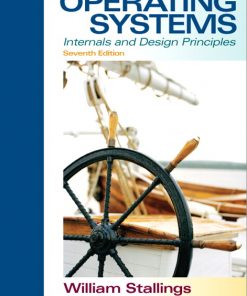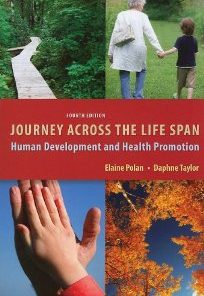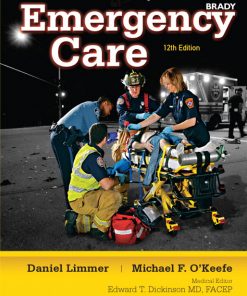World Societies The Evolution of Human Social Life Sanderson 1st Edition Sanderson Alderson Test Bank
$55.00
World Societies The Evolution of Human Social Life Sanderson 1st Edition Sanderson Alderson Test Bank
You will receive this product within 24 hours after placing the order
978-0205359486
Contents
Chapter 1. 10,000 Years of Social Evolution 1
Chapter 2. Theories of Social Evolution and
Development 5
Chapter 3. Preindustrial Societies: Hunter-Gatherers
and Horticulturalists 12
Chapter 4. Preindustrial Societies: Agrarian and
Pastoral Societies 25
Chapter 5. The Rise of the Modern World 35
Chapter 6. Industrialization and the Expansion of
the World-System 45
Chapter 7. Industrial Capitalist Societies 54
Chapter 8. The Rise and Demise of State Socialism 67
Chapter 9. Economic Development and
Underdevelopment 78
Chapter 10. Globalization 90
Chapter 11. Retrospect and Prospect: The Past 10,000
Years and the Next 100 97
1
Chapter 1
10,000 Years of Social Evolution
MULTIPLE-CHOICE QUESTIONS
1. Prior to 10,000 years ago, all humans everywhere lived by:
a. hunting and gathering (*)
b. hunting and gathering and horticulture
c. simple horticulture
d. animal herding
2. By the ancestral environment is meant:
a. any society in which people revere their ancestors
b. the hunting and gathering lifestyle in which anatomically modern humans have lived
until very recent times (*)
c. the cold environment of the Neandertals
d. none of these
3. The argument that anatomically modern humans originated in Africa about 160,000
years ago and began to migrate out of Africa around 100,000 years ago, eventually
populating the globe, is known as the:
a. African origins hypothesis
b. multiregional evolution hypothesis
c. Out of Africa hypothesis (*)
d. modern speciation hypothesis
2
4. Sanderson and Alderson consider the three greatest social transformations of the past
10,000 years to be:
a. the Neolithic Revolution; the rise of civilization; the rise of postindustrial society
b. the rise of civilization; the rise of the state; the Industrial Revolution
c. the rise of civilization; the Industrial Revolution; the postindustrial revolution
d. the Neolithic Revolution; the rise of civilization and the state; the rise of
capitalism and industrialism (*)
5. The Neolithic Revolution:
a. involved the transition from hunting and gathering to early agriculture (*)
b. marked the transition to pastoral and agrarian societies
c. was sudden and occurred in only one or two parts of the world
d. none of these
6. In which of the following parts of the world did the transition to agriculture occur
more or less independently:
a. the Middle East
b. China
c. Southeast Asia
d. Mesoamerica
e. all of these (*)
7. The region of the world that was the last to develop agriculture was:
a. Southeast Asia
b. Mesoamerica
c. China
d. sub-Saharan Africa (*)
8. How did agriculture develop in Europe?
a. it emerged as a result of new ideas developed by existing hunter-gatherer
communities
b. it was carried there by people migrating from the Middle East (*)
c. it was carried there by people migrating from north Africa and parts of China
9. As recently as the 1960s, it was generally thought that agriculture:
a. was invented once, in the Middle East, and then spread from there all over the
world (*)
b. did not develop until people began to live in settled villages
c. originated in China and Southeast Asia
d. was only about 3,000 years old
10. Which of the following is (or are) characteristic of civilizations?
a. they are politically ruled by states
b. many of their members lived in towns and cities
c. they have craft specialization, writing, and record keeping
3
d. they have monumental architecture
e. all of these (*)
11. The earliest civilizations and states arose in:
a. China
d. Mexico
c. Egypt and Mesopotamia (*)
d. North America
12. Theocratic political systems are ones in which:
a. governance is in the hands of priests (*)
b. religion is outlawed by political rulers
c. political rulers become increasingly religious over time
d. political rulers are religious but the common people lack religion
13. The dramatic social transformation that began, mostly in Europe, in the
sixteenth century was the:
a. Industrial Revolution
b. emergence of urban life
c. radical alteration of religion
d. rise of modern capitalism (*)
14. Which of the following was a consequence of industrialization?
a. increasing economic productivity
b. urbanization
c. increasing specialization of labor
d. the creation of an urban working class
e. all of these (*)
TRUE-FALSE QUESTIONS
15. In the Old World, agriculture and sedentary village life emerged together, whereas in
the New World sedentary village life developed several thousand years after
agriculture was first practiced. (T)
16. In the Old World, large animals were domesticated at about the same time that crops
began to be planted, but the New World lacked large animals suitable for
domestication. (T)
17. In the various regions of the world where it developed, agriculture emerged very
rapidly. (F)
18. As agricultural societies developed and became larger, more complex societies known
as chiefdoms and states emerged. (T)











Reviews
There are no reviews yet.